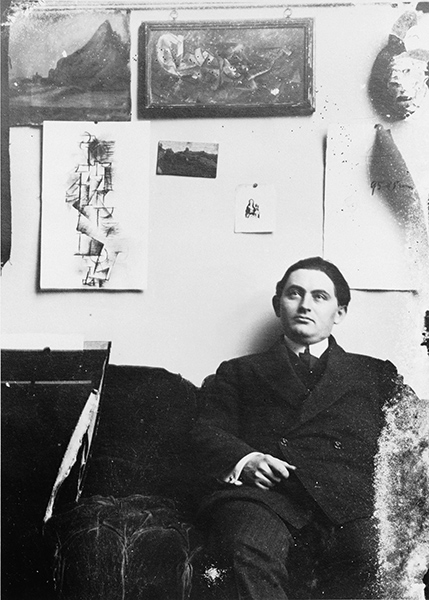Daniel-Henry Kahnweiler (1884-1979), first dealer of Cubist painters, was able to gather an amazing collection of Cubist works as early as 1914. As a German dealer settled in Paris since 1907, Kahnweiler spent the whole period of WWI in Switzerland refusing to take position in the conflict between France and Germany and was consequently considered as enemy by France. The French Government seized the entire stock of his gallery at the end of 1914 in order to be sold at auctions. The financial product of the sales went to Treasury Department as war compensation. The four Kahnweiler sales that took place from June 1921 to May 1923 was an unprecedented event in the history of modern art and was disastrous for the emerging Cubist art market. Seven years’ worth of carefully accumulated stock, totaling more than eight hundred Cubist works were thrown on the market, with underestimated prices, decreasing as sales went along. If cubist lovers and Kahnweiler’s friends were outraged by such sales, low prices allowed others to acquire works that they couldn’t have afforded and created a new category of buyers: small collectors and private dealers that entered the sales for pure speculation. For many bidders - as we are about to see with examples of André Breton and Paul Eluard - their role is however more complex, buying by passion but also with full awareness of the profits they could achieve. I have discovered that many works changed hands several times in the couple of years just following the sales, increasing their value, sometimes up to ten fold.
Kahnweiler who was the discoverer of these works, would not remain a passive witness. After six years of exile in Switzerland - as a pacifist he refused to engage in the war, neither for his birth country nor his adopted country -, he moved back to Paris in February 1920 and opened the following fall a new gallery, the Galerie Simon (29 bis rue d’Astorg), thanks to his friend André Simon who acted as backer. The German dealer had to start all over again with limited financial means. While the French Government forbade him to bid himself at his own sales, he created a syndicate, known as “Grassa”, including the German art dealer Alfred Flechtheim, the Swiss collector Hermann Rupf – long time friend with whom he stayed during the war - his brother Gustav, his brother-in-law Hans Forchheimer and his stepdaughter Louise Godon, later known as Louise Leiris. This syndicate would support the value of the artists of the Kahnweiler gallery at the maximum of their financial possibilities, especially for Gris works that were the most difficult to sale, making the syndicate actually the largest buyer of works in the first two sales.





 Summary
Summary